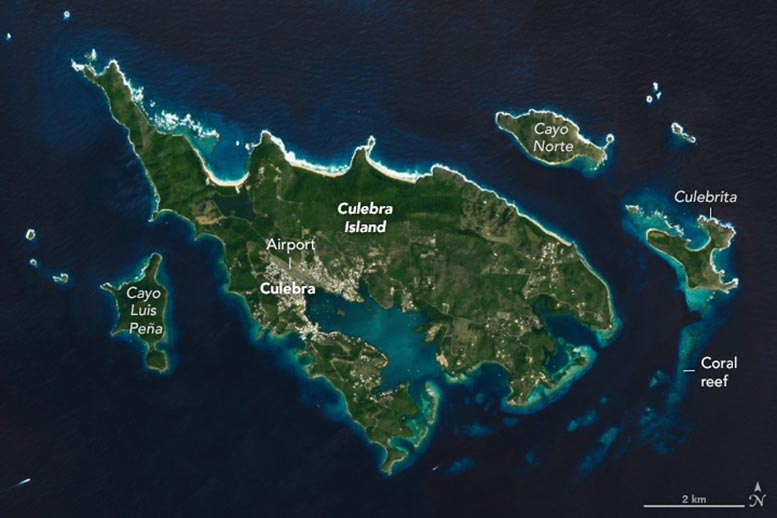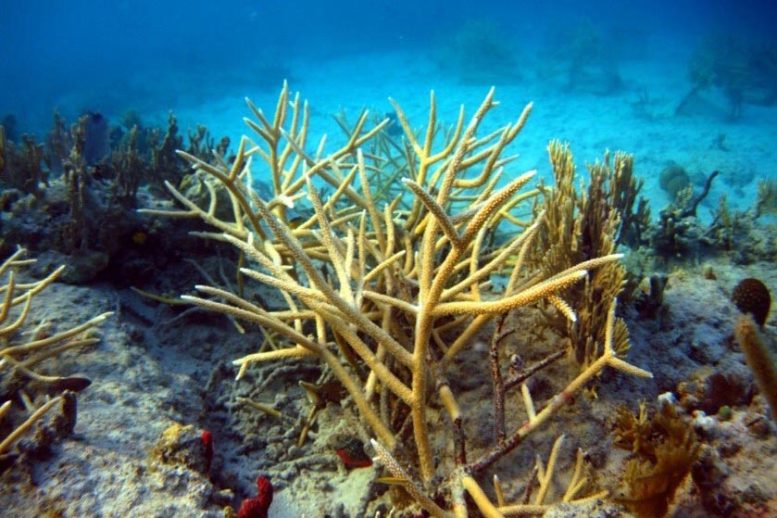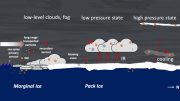
Satellite view of Culebra Island captured on February 10, 2024, by the Operational Land Imager on Landsat 8. The remote archipelago is flanked by extensive coral reef areas, but these hubs of biodiversity face a summer of sweltering water temperatures.
Culebra Island, located near Puerto Rico, boasts diverse marine ecosystems with extensive coral reefs protected by various reserves. Despite their ecological importance, these reefs face numerous threats such as pollution, rising sea temperatures, and coastal development. Efforts to monitor and conserve these habitats include NASA’s OCEANOS program, which engages students in marine research and coral restoration.
It is somewhat of a challenge to reach Culebra Island’s remote location, about 17 miles (27 kilometers) east of Puerto Rico. But those who do make it there find an array of marine ecosystems—including extensive coral reef areas protected by Culebra National Wildlife Refuge, the Luis Peña Channel Natural Reserve, and other conservation measures.
The Vital Role of Coral Reefs
Coral reefs are sometimes called the “rainforests of the sea” because of the diversity of marine life found amidst their formations. Corals build up slowly over time from the calcium carbonate secretions of small organisms called polyps. While coral reefs cover less than 1 percent of the ocean floor, scientists estimate that nearly 25 percent of all ocean species spend at least part of their lives in or near them, often depending on the structures for food, shelter, and protection. Surveys have documented at least 65 species of stony corals, 112 species of soft corals, and 242 species of reef fish on Puerto Rico’s extensive 3,370 square kilometers (1,300 square miles) of reef.
Signs of Culebra’s ecosystems are visible in this Landsat 8 image, captured by the OLI (Operational Land Imager) on February 10, 2024. On land, dry forests (dark green) blanket the hilly terrain, and spectacular sandy beaches (tan) line Culebra’s north shore. Deeper (dark blue) waters surround the island and nearby cays, while shallower (light blue) waters line the shores and lagoons. The green areas in shallow water are likely coral reefs, though seagrass meadows and seaweed patches can look similar.
Challenges Facing Culebra’s Reefs
“You can absolutely see patch reefs east of Culebra in this image,” said Juan Torres-Pérez, a research scientist at NASA’s Ames Research Center. “But know that many of its reefs are located near the shore and are not easy to distinguish in Landsat imagery, depending on the depth of the water and the type of coral.”
Benthic habitat maps from NOAA, based on higher-resolution satellite imagery, aerial photographs, and underwater videos, indicate that fringing and patch reefs encircle much of Culebra but are especially widespread north and east of the main island. Seagrass and seaweed meadows are more common in the shallow waters south of the island. Key reef-building species found in Culebra’s reefs include branching staghorn and elkhorn corals (shown below), mound-shaped mountainous star corals, and brain corals.

The remote archipelago is flanked by extensive coral reef areas, but these hubs of biodiversity face a summer of sweltering water temperatures.
Reefs around the world face a variety of environmental threats, including coastal development, overfishing, disease, tourism, and increasingly warm and acidic waters. To thrive, corals require clear water within a narrow temperature range that’s free of pollution and sunlight-blocking sediment.
Current Threats and Monitoring
Culebra’s reefs face such natural and human stressors as well. For instance, local stressors, including population growth and coastal development, have exposed reefs to runoff with sediment, nutrients, and other contaminants that may have taken a toll on coral health, according to local watershed management documents.
Ocean temperatures are another concern. Global ocean temperatures soared to record levels in 2023 and have stayed elevated throughout June 2024, prompting NOAA to confirm that Earth’s oceans are in the midst of a global bleaching event, the fourth on record. Coral bleaching occurs when corals become so stressed by warm waters or other factors that they expel the algae living in their tissues, sometimes leading to death.
Since the start of the bleaching event in February 2023, widespread bleaching has occurred in 62 countries and territories worldwide, according to NOAA. While bleaching conditions were more widespread during a past event from 2014 to 2017, the current event has been particularly intense in the Atlantic Ocean. Within the past year, 99.7 percent of tropical reef areas in the Atlantic Ocean have experienced bleaching-level heat stress, the agency reported.
In many parts of the Caribbean Sea, including the waters around Culebra, a marine heat wave persisted for several weeks in summer 2023. “Culebra’s reefs were affected by the heat, with several major reef-building species bleaching or dying,” Torres-Pérez said. “There is even more concern about this summer since sea surface temperatures are starting out higher than they were last summer.”
Educational and Conservation Efforts
Torres-Pérez and other NASA scientists will have opportunities to check on some of Culebra’s reefs in the coming weeks and months. Culebra is one of the field sites of NASA’s OCEANOS program, which brings oceanography and marine field research opportunities to graduating high school seniors and first-generation undergraduate students in Puerto Rico.
OCEANOS, which stands for Ocean Community Engagement and Awareness using NASA Earth Observations and Science for Hispanic/Latino Students, is a month-long summer internship program that trains participants in remote sensing image analysis and field techniques in ocean science. In addition to studying coral reef ecology and conservation, students build their own bio-optic field instruments, sample plankton, perform shore ecology studies, and replant coral. Torres-Pérez is the project’s principal investigator.
As part of OCEANOS, NASA partnered with Sociedad Ambiente Marino (SAM), an organization dedicated to restoring Culebra’s reefs. The organization’s divers have planted more than 160,000 pieces of coral around Culebra in recent years to help fortify the reefs, according to Torres-Pérez. The photo above, courtesy of SAM, shows staghorn corals transplanted onto a metal structure. The group will train OCEANOS students on coral farming, beach profiling, reef ecology, 3D printing of coral colonies, and seagrass conservation.
NASA Earth Observatory image by Wanmei Liang, using Landsat data from the U.S. Geological Survey. Photograph courtesy of Sociedad Ambiente Marino.









Be the first to comment on "Can Culebra’s Coral Survive the Climate Crisis?"